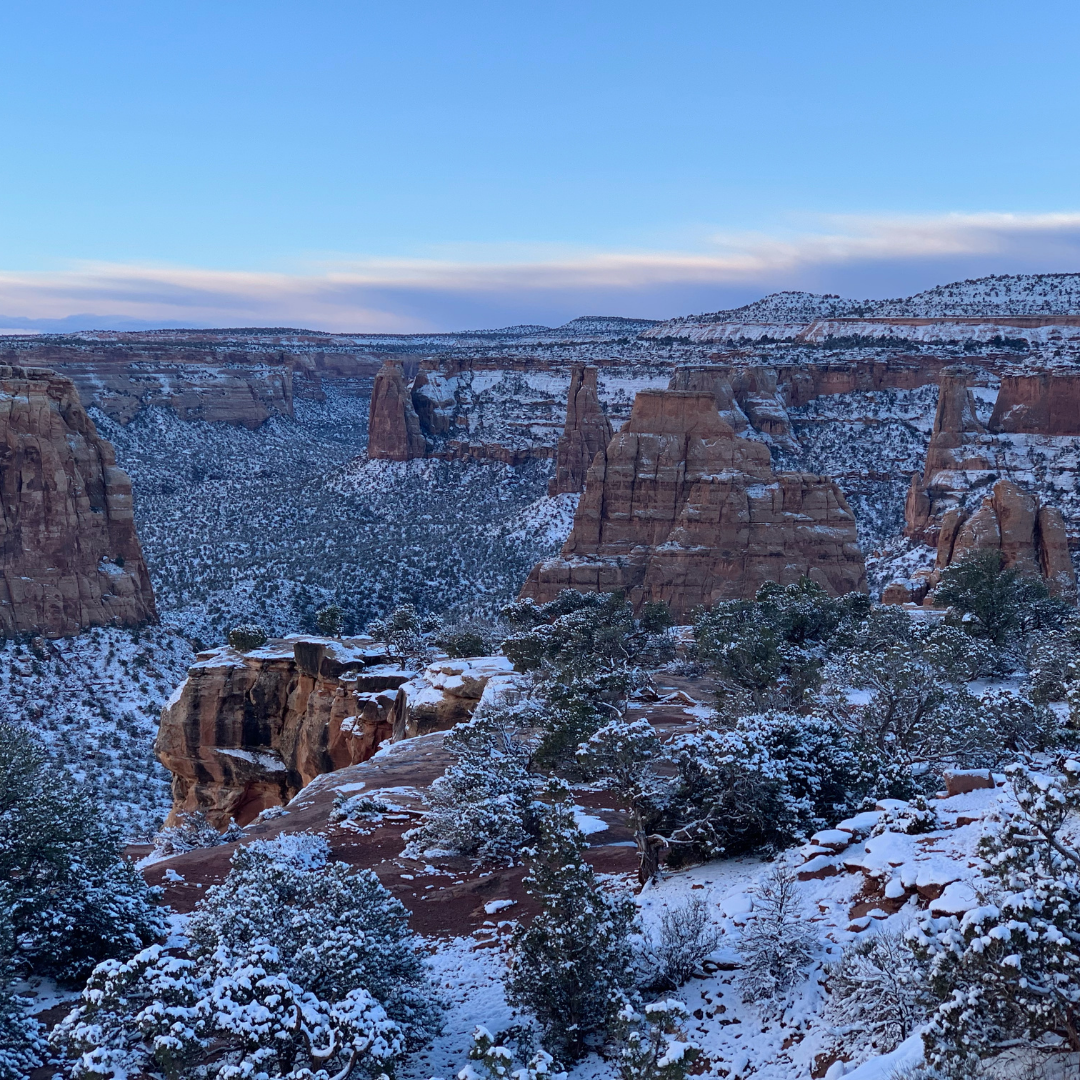
How to Enjoy Your Winter Hike
Share
Words by Katie Houston
When I strapped up for my first shakedown hike the December before I left for the AT, I wasn’t too worried. My Grandma and my Mom were doing all the worrying the weekend warranted anyway. Say what you want about the 10-year-old gear I was using and the 27 lbs I had on my back for one night of camping, I definitely had the confidence of someone who was going to have a successful winter hike.

I was hiking the Art Loeb, a 30-mile trail in Western North Carolina, and had planned for it to take no more than 2 days. The first day went as expected; my friend helped me drop off my car at one end and she dropped me at the other. I got about 12 miles in on the first day, then set up camp. I immediately decided I would ditch my pot on my future thru-hike as I scrubbed futility at the cold mac-n-cheese after a disappointing meal, and soon fell asleep.
I’ve always had a knack for sleeping well in cold temperatures, which probably stems from the couple of years I spent sleeping in my tree house in my backyard as a kid. This shakedown hike was no exception. When I finally peeked my head out from inside my sleeping bag and my tent zipper refused to budge, I realized pretty quickly that I had slept through an ice storm.
My morning then consisted awkwardly figuring out how to take down my tent that was sandwiched between the stuck-together rain fly and groundsheet. After finally succeeding (while gaining a significant amount of water weight from all the ice on my gear) and giving some hot breaths to my frozen fingers, I realized my next few problems. Even though I had slept with it, my phone’s charge was zapped, all my water was frozen solid, and I had lost my map sometime the day before. (For those unfamiliar with it, the Art Loeb trail is notoriously unmarked and difficult to navigate). After trying to press on for a couple more miles, I decided the attempt was futile and turned around.
Although my shakedown hike on the Art Loeb didn’t go as I planned it, I wouldn’t trade that experience for anything. Hiking in winter offered me the feeling of being truly alone without feeling lonely: a feeling a lot of people can identify with right now. It also gave me the confidence to start my thru-hike in February, thus avoiding the bubble. If you’re nervous about embarking on a winter trek, here are some tips that helped me enjoy my adventure safely.
-
Be prepared/ do your research. Figure out what layers and gear works best for you, and don’t cut corners to drop weight. Make sure you have enough warm clothes that won’t make you sweat too much and boots that can handle being wet if you plan on hiking through the snow. Always check the weather and be prepared to bail on your hike if necessary. Which brings me to my next point...
-
Have a plan B. This especially includes people who prefer to hike solo, like me. Whether it is a separate pickup plan, someone knowing when to expect you, or having a bail out option half-way through, expect the unexpected to happen. And if *cough cough* you lose your map, all your water is frozen, and your phone dies, you’re ready to leave with a good story.
-
Have a sense of humor and keep your spirits up. Aside from the tears I shed trying to fill up my water bottles with ice-cold water in the snow, the whole morning of my disasters on the Art Loeb left me laughing at myself. I went into the situation with all the confidence a 21-year-old could muster, and had more things than I could count go wrong. From army-crawling out from under my frozen tent fly, to realizing the 2-lb bear canister was probably not necessary because even the bears weren’t crazy enough to be out in this weather, I knew I was going to be the punchline of all the stories I was going to tell from this. But it’s okay to laugh at ourselves, and it’s okay to have fun in defiance of uncomfortable circumstances. That’s why people hike in the winter anyway: not because it’s in our comfort zone, but because plenty of advantages in spite of the challenges
-
Don’t let the winter get you down. Seasonal depression is real and practicing self-care is important now more than ever. Going on a hike in the winter is a great way to get endorphins flowing and get out of the house. Not to mention there’s no bugs, no crowds, and more views on trail; don’t let the winter scare you away, rather, embrace it and have a good story to tell. Happy hiking!

Check out Katie's Lighter Pack Gear List here.
